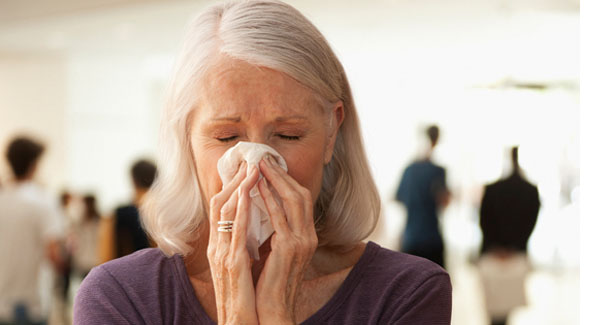Take Care! Flu Season Hits Peak in January and February
Its never too late to get the flu shot and take additional precautions.

Cough, cold, fever. It seems like many people around us have caught the bug.
Flu season officially starts around October and peaks in January and February when there’s a spike in the number of flu cases and emergency room/urgent care visits. Clinics and hospitals in San Diego County have seen a rise in the number of cases this month.
SDSU NewsCenter spoke with Dr. Rory Brening, interim medical director of Student Health Services (SHS) at San Diego State University, and Libby Skiles, SHS director, about the effectiveness of the flu shot and how to tell if you have the flu or just the common cold.
How effective is the flu shot, especially this late in the season?
Brening: It’s not too late to get the flu shot. Everyone should get it. It’s what the CDC (Centers for Disease Control & Prevention) recommends, it’s what WHO (World Health Organization) recommends. It reduces occurrences of the flu.
As medical providers, we get them as soon as it becomes available in the fall. We encourage faculty, staff and students to get it as early as possible. Even if you do get the flu, you may have a less severe illness. It may not completely prevent the flu, but it will reduce severity of symptoms and the duration. Even if you’ve already had the flu, it’s still worth getting it because there are multiple strains of flu viruses out there.
Skiles: Flu shots are free for students and still available at Student Health Services. You will build immunity within a couple weeks of receiving the vaccine.
Why does the flu season get worse in January and February?
Brening: It’s colder, so people spend more time indoors, in close proximity to others. It typically does get worse in winter.
How can we tell if we have the flu?
Brening: It has to do with a constellation of symptoms, usually fever, headache, sore throat and cough. You could have some or all of these symptoms. For the common cold, it is possible to have a fever as well. When we see patients, we get an idea of what the patient may have and determine when a flu test is indicated. We also take into account potential exposure, what time of year it is, and whether it’s at a peak. If we suspect the flu, we do a simple test, inserting a swab in the nose. It’s painless and quick, and we get the results within a few minutes.
What are some precautions we can take?
Brening: If you’re feeling sick, isolate yourself and avoid being near others until you’re better. Don’t go to class or other activities. If you’re not sure, students can call (619-594-4325) and ask to talk to the nurse here and see if they need you to come in and see a provider, or go to an urgent care or emergency department. When the Student Health Services clinic is closed, you can still call the after-hours line (858-225-3105) 365 days a year, and speak to a triage nurse who will help students decide if they can take measures at home or if they need to go to an urgent care or emergency department. To prevent catching influenza or other viruses, liberal use of alcohol-based sanitizers seems to work really well.
Skiles: Some common things we see with students are sharing utensils, beverages, or lip balm. They should avoid that. Getting good rest and exercise is key.
Does taking antiviral medicines help if you have the flu?
Brening: It’s most effective taken within 48 hours of onset of illness. Tamiflu is a five-day prescription medication that you take twice a day. It’s particularly important for people who have asthma, diabetes or other chronic conditions, because they are more susceptible to complications from influenza such as pneumonia.


